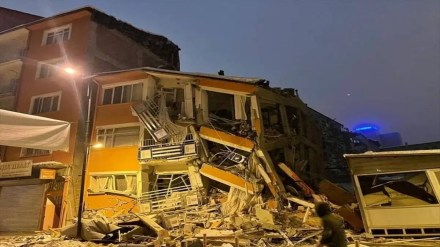By Neeraj Singh Manhas
The tectonic plates of the Eurasian and African continents meet in Turkey, which is why the country is known as a plate boundary country. The constant shifting of these plates results in the build-up of stress and pressure, which can trigger earthquakes. In addition, the region possesses a complicated geological structure with a large number of active fault lines, which further raises the probability of seismic activity. Because of this, Turkey is classified as a seismically active zone and is at an increased risk for earthquakes.
The dreadful three earthquakes on 06th February 2023 traumatised Turkey and Syria, with 7.8, 7.6 and 6.0 magnitude, roughly killing more than 47,000 people in both countries. The earthquake caused damage through various mechanisms, including ground shaking, soil liquefaction, and landslides.
Past Earthquake Incidents
There have been several significant earthquakes in Turkey’s history. Some of the most notable include:
August 17, 1999: A 7.4 magnitude earthquake struck the western city of Izmit, causing widespread damage and killing over 17,000 people.
March 8, 2010: A 5.9 magnitude earthquake struck the city of Elazig, killing 51 people and injuring over 1,000.
October 23, 2011: A 7.2 magnitude earthquake struck the eastern city of Van, killing over 500 people and injuring thousands more.
January 24, 2020: A 6.8 magnitude earthquake struck the eastern province of Elazig, killing 41 people and injuring over 1,600.
Why did India help Turkey?
India’s response to earthquakes and other natural disasters is guided by humanitarian principles and a commitment to provide assistance to those in need, regardless of political or diplomatic considerations. India has a long history of providing disaster relief to countries in need, including in the region and beyond.
In the case of the earthquake in Turkey, India offered assistance as a sign of solidarity with the people of Turkey and to demonstrate its commitment to regional stability and cooperation. Providing disaster relief and assistance is a common expression of international humanitarianism, and it is an important way for countries to show their support for each other and to work together in times of crisis.
It is also worth noting that while there may be political differences between India and Turkey on some issues, these do not detract from the importance of working together to address humanitarian crises and provide assistance to those in need.
What is the Geopolitical Angle?
The impact of the earthquakes in Turkey on Europe’s energy security and dependence on crude oil from Russia will depend on the extent of the damage to infrastructure, such as pipelines, and the speed and efficiency of recovery efforts. If the damage to energy infrastructure is significant, it could disrupt energy supplies to Europe and increase dependence on alternative sources, including Russia.
However, it is important to note that Europe’s diversified energy mix and sources are not solely dependent on imports from Turkey or Russia. Europe has been working to reduce its dependence on any single energy source and to increase the use of renewable energy sources, which can help reduce its vulnerability to disruptions in supply.
In the short term, disruptions to energy supplies from Turkey due to the earthquakes may significantly impact European energy markets. They could lead to increased prices or shortages. However, it is also possible that Europe can quickly resume imports from other sources, and the impact on energy markets will be limited.
Overall, the impact of the earthquakes in Turkey on Europe’s energy security and dependence on crude oil from Russia will depend on many factors and is difficult to predict with certainty. Europe needs to continue to invest in energy diversification and infrastructure resilience to reduce its vulnerability to future disruptions.
Turkey’s Earthquake Risk Management and Preparedness Strategies
Turkey has put in place a variety of precautionary measures to lower the probability of earthquakes and lessen the severity of the damage caused by seismic activity. Monitoring and early warning systems for earthquakes are an essential part of Turkey’s plan to mitigate the danger of seismic damage. The nation is equipped with a comprehensive seismometer network that not only tracks seismic activity but also issues early warnings to the general population.
The implementation and enforcement of building codes and regulations constitutes another critical component of Turkey’s strategy for mitigating earthquake risk. The nation has adopted stringent building rules to guarantee that buildings are constructed in a way that can resist the effects of seismic activity. Also, the government has begun initiatives to repair older buildings so that they are better able to withstand the effects of earthquakes.
Turkey has set up emergency response and rescue teams in order to promptly respond to earthquakes and provide aid to areas that have been impacted. These teams have the trained personnel and the appropriate equipment to conduct search and rescue operations, give medical aid, and distribute relief supplies. In addition, they are supplied with the necessary equipment to distribute relief supplies.
In addition, Turkey has also initiated public education efforts to increase awareness about earthquakes and how people can best prepare for them. Drills simulating earthquakes have been carried out in schools and other public buildings by the government to ensure that people are aware of what to do in the event of an earthquake.
These measures can help to reduce the impact of future earthquakes in Turkey and can help to ensure the safety and well-being of its citizens. The government and other stakeholders need to work together to develop and implement these measures and continue investing in disaster risk reduction and preparedness efforts.
The author is the Director of Research in the Indo-Pacific Consortium at Raisina House, New Delhi.
Disclaimer: Views expressed are personal and do not reflect the official position or policy of Financial Express Online. Reproducing this content without permission is prohibited.
